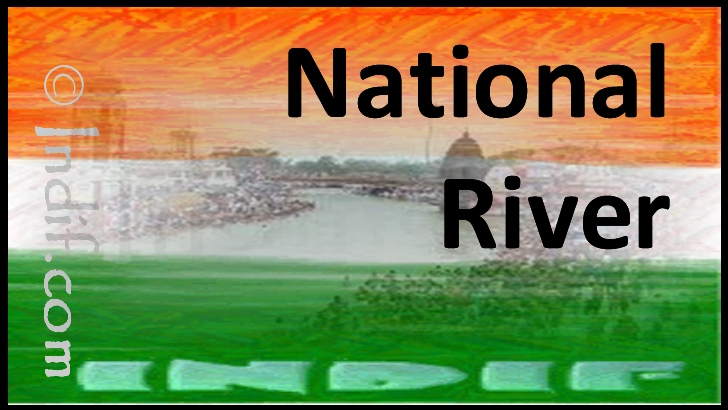The River Ganga or Ganges is officially declared the National River of India. It is one of the major river in Indian sub-continent. It was declared a national river by Prime Minister Manmohan Singh in 2008 in order to achieve the objectives of the Ganga Action Plan, initiated by PM Rajiv Gandhi in 1985.
The River Ganga is a trans-boundary river of India and Bangladesh. Ganga is the longest river of India flowing through mountains, valleys and plains. The 2,525 km (1,569 mi) river rises in the western Himalayas in the Indian state of Uttarakhand, and flows south and east through the Gangetic Plain of North India into Bangladesh, where it merges into the Bay of Bengal.
The Ganga is revered by Hindus as the most sacred river on earth. In Hindu belief the Ganges is associated with the Goddess Ganga and, according to the myth, the sage Bhargava underwent extreme austerities to bring the divine Ganga down to the earth in order to cleanse the impurities of his ancestors. Delighted by his devotion Goddess Ganga came rushing down with such immense force that her crashing waters threatned to cause devastation of the earth. But the god Shiva, cushioned her fall in his matted hairs and knotting it until the flow subsided. Some of the important religious ceremonies related to Hindus are held on the banks of the river at cities such as Varanasi, Haridwar and Allahabad. Prominent festivals and occasions are Kumbh Mela celebration happening after every 12 years at its bank of Allahabad, so is Chhat Puja organized annually on its banks.
The actual source of river Ganga is a rock-faced
called Gomukhi (The face of the Cow), located in Himaliayas,, near Gangotri.
The Ganga has religious and economic activities intrinsically linked with it. River Ganga is also a lifeline to millions of Indians who live along its course and depend on it for their daily needs. The Ganga and its tributaries function as a perpetual source of water supply to a huge agricultural region in India. Major crops grown in the region include sugarcane, rice, oilseeds, lentils, wheat, and potatoes.It has also been important historically: many former provincial or imperial capitals (such as Patliputra, Kannauj, Kara, Kashi, Allahabad, Murshidabad, Munger, Baharampur and Kolkata) have been located on its banks.
Major cities along the river:
Haridwar
Rishikesh
Agra
Kanpur
Varanasi
Allahabad
In addition to the religious and economic activities , the torrents of the Ganges are famous for adventure sports activities like river rafting, drawing many adventure sports fans in the summer season.









